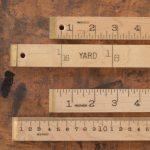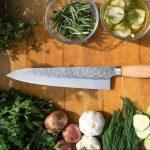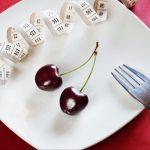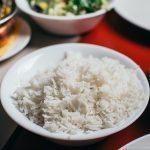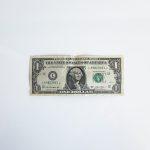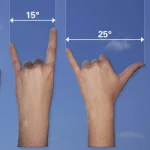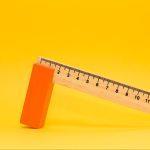Wine Glass Size Chart
The history of wine glasses is a long and fascinating one. Though the exact origins are unknown, it is believed that the first wine glasses were made in the Middle East sometime during the 13th century. These early glasses were simple affairs, made from crudely blown glass with little in the way of design or decoration. Over time, however, glass-making technology improved and wine glasses became more elaborate. By the 16th century, Venetian glassmakers had perfected the art of stemware, and their wine glasses were prized by nobility across Europe (skip straight to the wine glass size chart).

It was during the 17th century that champagne glasses first came into use. Champagne is a sparkling wine, and it was found that the bubbles dissipated quickly when served in a traditional wine glass. To solve this problem, glassmakers began to create taller, narrower glasses with slightly flared rims. This design helped to keep the bubbles in the champagne longer, allowing drinkers to enjoy its effervescence to the fullest. Today, champagne flutes are a staple of any formal occasion.
From their humble beginnings in the Middle East, wine glasses have come a long way. Today, there are dozens of different styles of a wine glass, each designed to enhance the flavor and aroma of a particular type of wine. But size also matters so much. A glass that is too small will cause you to pour more wine, which can lead to a loss of flavor. On the other hand, a glass that is too large will allow too much air to mix with the wine, causing it to become oxidized and lose its flavor.
The ideal glass size for enjoying wine should be considered carefully and this is exactly what this wine glass size chart guide will help you to achieve.
Jump right into the Frequently Asked Questions
Related: Wine Bottle Sizes & Different Types by Name & amount of glasses
Wine Glass Size Table of Contents
Wine glass size charts
Related: Gatorade Bottle Sizes explained by type and flavor, What size is a quart – easily explained by country in pints and cups
| Red Wine Glasses | ||||||
| Glass | Glass capacity | Glass tall | Glass wide | |||
| oz | ml | inches | cm | inches | cm | |
| Bordeaux | 22 | 651.2 | 8 | 20.32 | 3.8 | 9.652 |
| Burgundy | 21-25 | 620 – 740 | 9 | 22.86 | 5 | 12.7 |
| Cabernet / Merlot | 22 | 651.2 | 9.25 | 23.495 | 3.8 | 9.652 |
| Pinot Noir | 24-28 | 710 – 830 | 9-11 | 23-28 | 5 | 12.7 |
| Syrah / Shiraz | 24 | 710.4 | 9.25 | 23.495 | 3.8 | 9.652 |
| Zinfandel | 14 | 414.4 | 9 | 22.86 | 3 | 7.62 |
| Dessert & Fortified Wine Glasses | ||||||
| Glass | Glass capacity | Glass tall | Glass wide | |||
| oz | ml | inches | cm | inches | cm | |
| Port | 8.5 | 251.6 | 6.5 | 16.51 | 2.6 | 6.604 |
| Sherry | 4 | 118.4 | 7.5 | 19.05 | 2.4 | 6.096 |
| White Wine Glasses | ||||||
| Glass | Glass capacity | Glass tall | Glass wide | |||
| oz | ml | inches | cm | inches | cm | |
| Chardonnay | 11–14 | 325 – 414 | 8 | 20.32 | 3 | 7.62 |
| Sauvignon Blanc | 12 | 355.2 | 8.5 | 21.59 | 3 | 7.62 |
| Riesling | 14 | 414 | 9 | 22.86 | 3.5 | 8.89 |
| Montrachet | 18 | 532.8 | 7 | 24.5 | 4.8 | 8.9 |
| Sparkling Wine Glasses ( champagne ) | ||||||
| Glass | Glass capacity | Glass tall | Glass wide | |||
| oz | mk | inches | cm | inches | cm | |
| Flute | 5–8 | 148 – 237 | 9 | 22.86 | 2.8 | 7.112 |
| Coupe / Vintage Champagne | 9.5 | 281.2 | 6 | 15.24 | 4.2 | 10.668 |
| Rose | 11.5 | 340.4 | 8.5 | 21.59 | 3 | 7.62 |
| tulip | 13.3 | 393.68 | 9.65 | 24.5 | 3.5 | 8.9 |
| Other Types of Wine Glasses | ||||||
| Glass | Glass capacity | Glass tall | Glass wide | |||
| oz | ml | inches | cm | inches | cm | |
| Hock | 8 | 236.8 | 7.5 | 19.05 | 3 | 7.62 |
| Stemless | 21.16 | 626 | 4.76 | 12.09 | 3.74 | 9.5 |
| ISO Wine Tasting Glass | 10 | 296 | 7 | 17.78 | 1 | 2.54 |
What are the 3 types of champagne glasses?
Related: Liquor bottle size by name, type and volume (with an easy size chart)
There are three common types of champagne glasses: the flute, the coupe, and the tulip. Each glass has its own unique shape that helps to enhance the taste and aroma of champagne.
i) Flute
The flute is the most popular type of champagne glass. It has a long, slender stem and a tall, narrow bowl. The tall, narrow shape of the flute helps to preserve the bubbles in champagne, making it ideal for sparkling wine. The flute is also less likely to spill than a traditional wine glass.
The long stem of the flute helps to keep the champagne cool, and the narrow bowl allows the drinker to control the amount of champagne they consume. As a result, the flute is the ideal glass for enjoying champagne.
Thanks to its popularity, the flute is now available in a variety of styles, from classic to modern. Whether you are looking for a traditional flute or something more contemporary, there is sure to be a style that suits your taste. So next time you pop open a bottle of champagne, make sure to do so in style with a beautiful flute glass.
ii) Coupe
The coupe is a classic champagne glass that has been around for centuries. Its wide bowl allows the champagne to breathe, making it ideal for champagnes that are not as heavily carbonated. The shorter, wider shape of the coupe also helps to keep the bubbly from escaping too quickly.
As a result, the coupe is perfect for enjoying Champagne at its best. Whether you’re raising a glass to celebrate a special occasion or simply savoring a glass of bubbly, the coupe is the ideal choice.
iii) Tulip
The tulip glass is similar in shape to the flute, but it has a wider bowl that tapers inward at the top. This shape helps to concentrate the aromas of the champagne, making it ideal for enjoying champagnes with complex flavor profiles.
In addition, the tulip glass helps to keep the bubbles in the champagne more evenly distributed, resulting in a more pleasant drinking experience. Whether you’re enjoying a bottle of vintage champagne or a more affordable sparkling wine, the tulip glass is a great way to enjoy your favorite bubbly.
Learn more about different wine glass size (video)
Frequently Asked Questions
What size should a champagne glass be?
While the size of a champagne glass may not seem like an important consideration, it can actually make a big difference in the taste and aroma of the wine. Champagne glasses come in a variety of sizes, but the most popular option is the flute which holds 6 ounces of wine, but most servers prefer to only do a 4-ounce pour.
Flutes are tall and slender, with a long stem that helps to keep the wine cool. The shape of the glass also helps to preserve the bubbles in the wine, giving it a more vibrant appearance.
In addition, the narrow opening of the flute concentrates the aromas of the wine, making it more enjoyable to drink. As a result, flutes are the ideal option for enjoying champagne. While other glassware options may be suitable for some wines, champagne always tastes best when served in a flute.
Is wine glass the same as champagne glass?
Wine and champagne glasses may look similar, but there are actually a few key differences between them. For starters, wine glasses are typically taller than champagne glasses, with narrower bowls. This is because champagne is meant to be drunk quickly, while wine is meant to be savored.
Champagne glasses also have flutes that help to preserve carbonation, whereas wine glasses do not. In addition, the stem of a champagne glass is shorter than the stem of a wine glass, making it easier to hold the glass without warming the contents.
While it is technically possible to drink champagne out of a red wine glass or a white wine glass, it is not ideal. The champagne flute is specifically designed to showcase the sparkling wine’s unique flavor and texture, so it is always best to serve champagne in a flute.
What’s the biggest wine glass?
The biggest wine glass so far mesures 3.87 m (12 ft 8 in) in height and 2.04 m (6 ft 8 in) at its widest point. On 21 April 2012, the Kumitat Festi Esterni San Gorg Hal Qormi (Malta) presented and measured the world’s largest wine glass.
This massive wine glass was created as part of an annual festival celebrating the town of Hal Qormi, Malta. The festival features a range of wine-related events and attractions, making it the perfect place to enjoy a glass of wine – or two! – in this record-breaking vessel.
How do you measure the size of a wine glass?
The size of a wine glass is typically measured in ounces. The standard sizes for red and white wine glasses are six ounces and eight ounces, respectively. However, many people prefer to use larger glasses, which can hold up to twelve ounces of wine.
There are a few different ways to measure the size of a wine glass. The first is to simply fill the glass with water and then pour it into a measuring cup. This will give you an accurate measurement of the glass’s capacity.
Another option is to use a ruler or tape measure to measure the circumference of the glass at its widest point. Finally, you can also use a volume calculator to estimate the capacity of the glass based on its dimensions.
No matter which method you choose, be sure to use an accurate measurement so that your wine glasses are all the same size.
What size is a medium glass of wine?
A medium glass of wine is typically around six ounces (175 ml), though this can vary slightly depending on the type of glass being used. In general, a medium glass is just large enough to allow for a reasonable portion of wine, without being too large to finish in one sitting.
This size is also convenient for sharing, as two people can each have a fair amount of wine without getting overly full.
Of course, there are always exceptions to the rule, and some people may prefer a larger or smaller glass of wine. But for most people, a medium glass is a perfect size.
Is 250ml a large glass of wine?
Depending on who you ask, 250ml may or may not be a large glass of wine. For some, a standard glass of wine is closer to 175ml, which would make 250ml a relatively large pour. However, others may consider a standard glass of wine to be closer to 250ml, in which case a large glass would be even more generous.
In any case, it’s generally agreed that a large glass of wine should be at least 200ml, so by that measure, 250ml is definitely on the large side. Of course, the size of the glass is also important to consider.
Conclusion
In conclusion, remember that the size of the wine glass or champagne glass you are going to use will affect a number of crucial things.
So the next time you’re hosting a dinner party or attending a formal event, take a moment to consider the size of your wine glass. The size of the glass can have a significant impact on the taste and aroma of the wine, as well as on the overall drinking experience. A larger glass will allow more oxygen to reach the wine, which can help to soften the tannins and bring out the fruit flavors. Meanwhile, a smaller glass will concentrate the aromas of the wine, making it easier to appreciate its subtleties. So, whether you’re enjoying a glass of red with dinner or toasting to a special occasion, be sure to choose the right size glass for maximum enjoyment.
Please ask any questions you have in the comments section and we’ll definitely be very happy to help you find your way around wine glasses.
Picture in this post is by Mona Miller on Unsplash
Related to Wine Glass Size
- Barbie Doll Size : What are different sizes of Barbie ?
- Blanket sizes chart : blanket sizes and dimensions in inches & cm
- Tablecloth size chart – What are standard tablecloth sizes ?
- How Many Meters Are In A Yard?
- How Many Centimeters are 8 Inches?
- Knife Sizes and Different Types
- 4 Inches is How Many Centimeters?
- Light Bulb Base Sizes : What size light bulb base do I need?
- Tesalate Towel Size Guide
- Light bulb Size : What are the different and standard bulb sizes?
- Duvet Sizes: What is a Standard-Size Duvet?
- Single Car Garage Size and Dimensions
- How High Is A Story?
- How Much Does 1 Cup Of Rice Weigh?
- Cast Iron Skillet Sizes: What Size Do I Need?
- Dollar Bills Size Chart
- Pizza Sizes: Which One to Order?
- How To Measure A Foot Without A Ruler
- Wine Glass Size Chart
- Tiny Houses Size Charts
- How Many Inches Are In 20 Centimeters?




